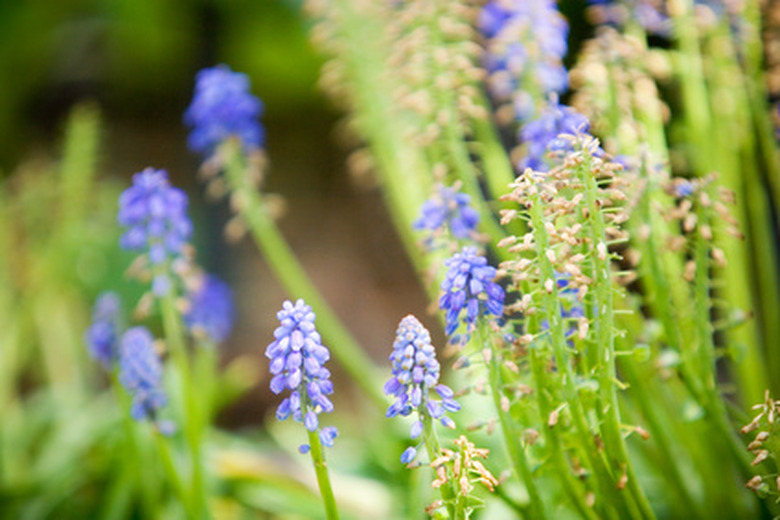The Metabolic Pathways Of Photosynthesis And Cellular Respiration
The photosynthesis and cellular respiration cycle is used to produce usable energy for plants and other organisms. These processes occur on a molecular level inside the cells of organisms. On this scale, energy-containing molecules are put through metabolic processes that yield energy that can be used right away. One such source of energy is produced in photosynthesis; another is stored like a battery as in cellular respiration.
Photosynthesis Metabolism
Photosynthesis Metabolism
Plants receive light energy through small pores on their leaves called stomata and convert it in the organelles called chloroplasts, located in the plant cells in the leaves and green stems. Organelles are specialized parts of a cell that function in an organ-like fashion. The energy is used in this process to convert carbon dioxide and water into carbohydrates such as glucose and molecular oxygen.
Photosynthesis is a two-part metabolic process. The two parts of the biochemical pathway of photosynthesis are the energy-fixing reaction and the carbon-fixing reaction. The first produces adenosine triphosphate (ATP) and nicotinamide adenine dinucleaotide phosphate hydrogen (NADPH) molecules. Both molecules contain energy and are used in the carbon-fixing reaction to form glucose.
Energy-Fixing Reaction
Energy-Fixing Reaction
In the energy-fixing reaction of photosynthesis, electrons are passed through coenzymes and molecules where they release their energy. Most of the electrons are passed along the chain, but some of this energy is used to move protons in the form of hydrogen across the thylakoid membrane inside the chloroplast. The energy retained is then used to synthesize ATP and NADPH.
Carbon-Fixing Reaction
Carbon-Fixing Reaction
During the carbon-fixing reaction, the energy in the ATP and NADPH produced in the energy-fixing reaction is used to convert carbohydrates into glucose and other sugars and organic substances. This occurs through the Calvin cycle, named for the researcher Melvin Calvin. The cycle uses carbon dioxide acquired from the atmosphere. Hydrogen from NADPH, carbon from carbon dioxide and oxygen from water combine to form the glucose molecules denoted as C6H12O6.
Cellular Respiration
Cellular Respiration
Organisms use cellular respiration to convert carbohydrates into energy, and this process occurs in the cell's cytoplasm. The energy released from carbohydrates is stored in ATP molecules. These molecules are formed using the energy obtained from carbohydrates to combine adenosine diphosphate (ADP) molecules and phosphate ions. Cells then use this stored energy for various energy-dependent processes.
Also produced during cellular respiration are water and carbon dioxide. The process that yields these three products is composed of four parts: glycolosis, the Krebs cycle, the electron transport system and chemiosmosis.
Glycolosis: Breaking Down Glucose
Glycolosis: Breaking Down Glucose
During glycolosis, glucose is broken down into two pyruvic acid molecules. Two ATP molecules are produced during this process. Two nicotinamide adenine dinucleotide (NADH) molecules that will be used in the electron transport system are also yielded during glycolosis.
The Krebs Cycle
The Krebs Cycle
In the Krebs cycle, two molecules of pyruvic acid produced during glycolosis are used to form NADH. This occurs when hydrogen is added to NAD. Also produced during the Krebs cycle are two ATP molecules.
Carbon atoms released in the process combine with oxygen to form carbon dioxide. Six carbon dioxide molecules are released when the cycle is complete. These six molecules correspond to the six carbon atoms in glucose that were initially used in glycolosis.
Electron Transport System
Electron Transport System
Cytochromes (cell pigments) and coenzymes in the mitochondria form the electron transport system.
Electrons taken from NAD are transported through these carrier and transfer molecules. At certain points during the system, protons in the form of hydrogen atoms from NADH are transported across a membrane and released into the outer area of the mitochondria. Oxygen is the last electron acceptor in the chain. When it receives an electron, oxygen bonds with the released hydrogen to form water.
Cite This Article
MLA
Jansen, Jim. "The Metabolic Pathways Of Photosynthesis And Cellular Respiration" sciencing.com, https://www.sciencing.com/metabolic-pathways-photosynthesis-cellular-respiration-6456971/. 13 March 2019.
APA
Jansen, Jim. (2019, March 13). The Metabolic Pathways Of Photosynthesis And Cellular Respiration. sciencing.com. Retrieved from https://www.sciencing.com/metabolic-pathways-photosynthesis-cellular-respiration-6456971/
Chicago
Jansen, Jim. The Metabolic Pathways Of Photosynthesis And Cellular Respiration last modified March 24, 2022. https://www.sciencing.com/metabolic-pathways-photosynthesis-cellular-respiration-6456971/
